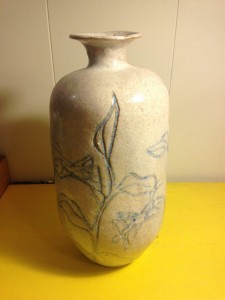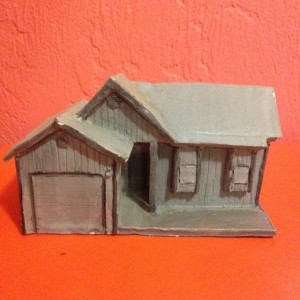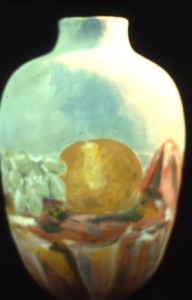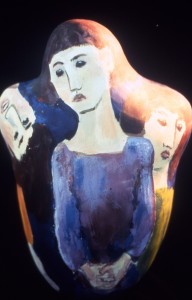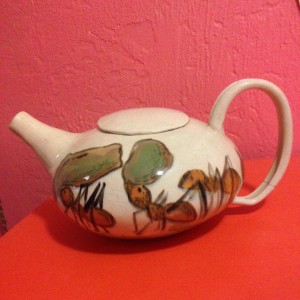I wanted to write an example of the end of the year portfolio/reflection post, but wanted to write about artworks and techniques that differ from our studio work. Since my parents are selling their house I have suddenly come into possession of many of my own high school ceramic projects, I realized I could accomplish my goal by sharing that work here. I think most of these were created in my junior year, keep in mind it wasn’t first ceramics class. Are these the words I would have written in high school? It is unlikely! I wrote the text imagining I were a student completing the reflection post I have asked you to write. On the back side of your blue handout you will find two other examples with fewer details and insights. Consider how you can write about your journey while including ceramic specific vocabulary and supporting examples from your artwork. (Thank you Kaye Kaufmann at Fletcher Sr. High School!)
The first project I made this year was a coiled vase made with white earthenware clay, When I was working on the vessel I knew I wanted to make it original so I decided to sculpt a realistic looking lizard and attach it around the shoulder of the vessel. The anole is important to me because there are many that live outside the kitchen door. I painted the lizard with green underglaze and put clear glaze over the whole object. I did a better job keeping my second vase symmetrical. I created a drawing of grasshoppers and leaves based on a National Geographic photograph.
I wanted all the grasshoppers to be the same size, to solve this problem I created a stencil to trace it onto the side of the vessel. I repeated the line drawing around the form and carved the lines with a pen. I am happier with the glazing on the grasshopper vase because it is a more even application and the cobalt stain I used on the drawing softens the carved lines. There is something to look at all around the pot instead of just at the top like my first one.
I used slabs to build a house that looks just like the one I live in. This is actually the second house I built, the first one did not turn out because I started working with the slabs before they were leatherhard, all the walls slumped or fell apart. I improved my slab building skills by allowing the slabs to dry before building with them. I painted the finished work with acrylic paints because we didn’t have a grey underglaze. I finished by making two coiled forms, one is a vessel and the other a sculpture. The vase shows my improvement in coiling and controlling the form, particularly at the base. I
painted the surface with a still life of fruit. I actually did the surface embellishment for a project in Mrs. Balducci’s painting class. For the sculpture, I was inspired by the ceramic artist, Rudy Autio, both in the form and the painting.
I painted my sister in three different poses both front and back on each side of the form. I feel this work is my most successful because the figures are painted in a style I am working on in my other art class.
If I could redo a project it would be the first coiled vase, I really struggled keeping the base of the pot symmetrical and the body of the pot is really just what happened, I didn’t have control over the direction of the clay. I think if you look at the neck and lip you can see that I figured it out as I finished the work.


